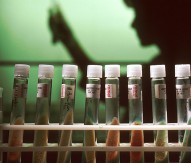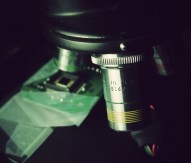
ERC backs Dresden academics
TU Dresden is celebrating after three of its scientists were awarded top EU grants.
The scientists secured Starting Grants from the European Research Council and will use the funding to advance investigations in life sciences and physical sciences and engineering.
Dr Volker Busskamp, research group leader at the DFG Research Center for Regenerative Therapies Dresden, will use the funding to support his research on controlled adult stem cell differentiation to neurons. The ERC project, entitled ‘Transcription Factor-mediated Neuronal Cell Fate Programming in Human Stem Cells’, aims to uncover the biological rules of neurogenesis in human stem cells and produce different types of neural cells in the laboratory.
Meanwhile, Dr Jörg Mansfeld, Emmy Noether group leader at the Biotechnology Center of TU Dresden, received the ERC money to support his research on cell cycle and redox regulation. Signatures of most cancers are aberrations in cell cycle regulation that can not only initiate, but also promote tumorigenesis. Focusing on the cell cycle machinery, Mansfeld’s group studies how cells decide between continuous proliferation reminiscent of cancer cells and the transition into quiescence, a dormant, non-proliferating state.
Emerging evidence suggests that the redox system by virtue of reactive oxygen species, such as hydrogen peroxide as signalling molecules feeds back on cell cycle regulation. As a byproduct of their rapid growth, cancer cells usually sustain much higher level of ROS compared to normal cells and thereby promote mutagenesis and increased proliferation. Yet the targets of ROS within the cell cycle machinery remain poorly understood. The investigation is entitled ‘The molecular interface between cell cycle and redox regulation’.
Finally, Assistant Professor Sebastian Reineke from the Institut für Angewandte Photophysik of TU Dresden was awarded a grant to support his project ‘Novel applications based on organic bioluminescence’, which includes a state in which organic molecules emit from two different electronic states and consequently act as dual colour emitter on the molecular level.




